It’s not enough to believe in something. You have to be ready to stand for something, if you want change.
- Edward Snowden
The situation looks bleak and it feels like there is nothing you or I can do.
This is not a predicament exclusive to our time. History can point us in the direction of those who felt exactly the same. Ordinary people who, constrained by injustice, took action to challenge those who held the power.
It is our right, and our moral obligation, to protest over unjust political, economic or social conditions. Many of the rights we take for granted came about as a result of protest—human rights, women’s rights, the rights of workers.
It has always been a struggle to bring about change, but it can be achieved.
What is civil disobedience?
Civil disobedience is the active, non-violent refusal to accept the dictates of governments. It informs them that unjust actions will be opposed and the people will act illegally if pushed to do so.
Civil disobedience causes disruption and focuses attention, while forcing debate with the aim of bringing about fundamental and progressive changes within our societies and our world.
Acts of civil disobedience do not have to be extreme. We can all be activists. Small actions can lead to larger ones, and can provide inspiration to individuals who may be unsure where to funnel their concerns. This in turn can help lay the pathway to further understanding and global change.
These fifteen examples of civil disobedience span almost a century. From the solitary action of a young Montgomery woman to the mass protests of thousands in Scotland and Sudan, every one of these protestors remain united in their demand for justice and call for a better world.
1. Fight for Women's Suffrage: UK 1928
Considered the inferior sex, women have no vote, no power and no say in how their world is governed. In the face of injustice, women fight back.
Deeds not Words.
The British fight for women’s suffrage (the legal right to vote) included groups from the women’s labour movement and the moderate, non-confrontational National Union of Women's Suffrage Societies (NUWSS). Believing in civil disobedience, the NUWSS disrupted Parliament, chained themselves to railings, distributed pamphlets and organised demonstrations and lectures.
The more militant Women’s Social and Political Union (WSPU) were prepared to use any tactic necessary. This included often violent, direct action.
When arrested, Suffragettes offered further resistance by going on hunger strike.
Although Suffragettes are often portrayed as originating from the ruling classes, thousands of brave working class women made huge personal sacrifices for the movement, their punishments often more barbaric than those of higher societal standing.
Not all women could afford the sacrifice. Many were breadwinners, or worked long shifts as servants or in factories, returning home to care for children and keep the house.
The 1918 Representation of the People Act granted women over the age of 30 the right to vote in Britain. Full suffrage, that is the right to vote over the age of 21, in accordance with male voting, was passed in 1928.
The Suffragette victory in Britain followed years of protest, struggle and inconceivable hardship. Each woman chose her role and every role was important.
Thirty five years previously, in 1893, the women of New Zealand were first to win the vote. Saudi Arabia granted women suffrage in 2015. Revolution may take decades, but when it eventually comes, it can have an everlasting impact on the course of history.
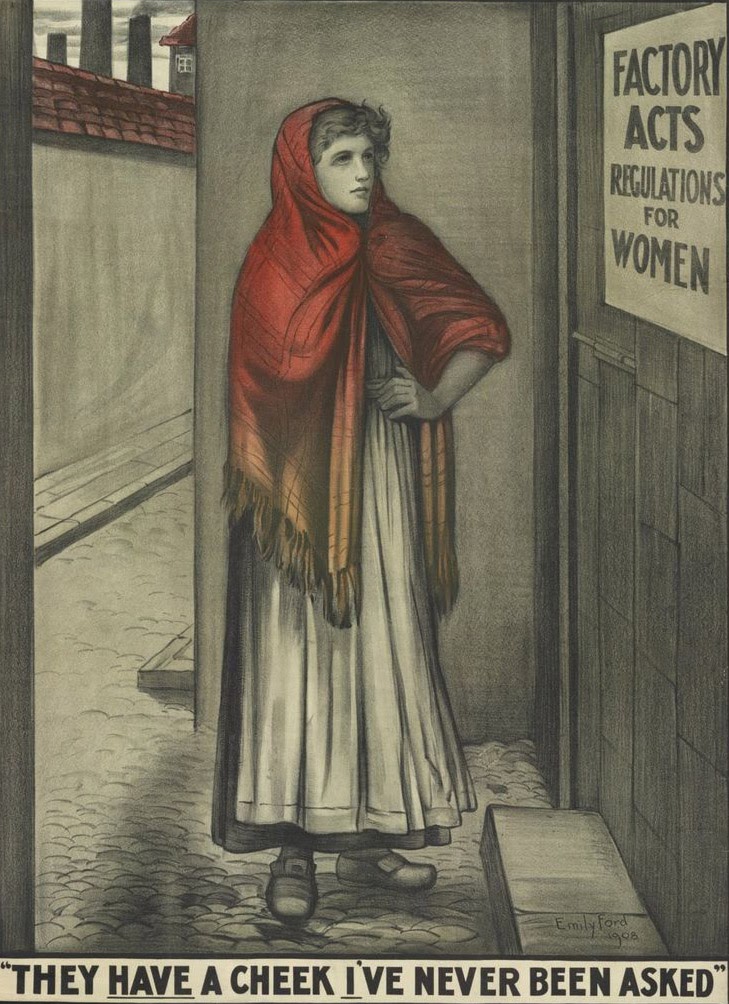
Laws for women—Written and voted for by men. Public Domain.
2.The Salt March: India 1930
Forced to pay inflated prices for the salt which keeps them alive, thousands of Indians follow one man on the long road to victory and independence.
Right against might
The1882 Salt Act prohibited the people of India, while under British rule, from collecting, producing or selling salt. The poor suffered most as they could not afford to buy the heavily taxed salt, a mineral vital for human metabolism in hot, humid climates. Those who broke the law were imprisoned.
Mahatma Gandhi left his ashram in Sabarmati on 12 March 1930 with 78 followers, to be joined by tens of thousands of others along the 240 mile march to the Arabian Sea.
By lifting salt from the ground in the coastal town of Dandi on 6th April, he openly defied British law. Gandhi had mobilised the satyagrahi, a philosophy of truth-focused, non-violent non-cooperation.
As part of the Civil Disobedience Movement, thousands more followed Gandhi's lead, with salt being made, bought and sold illegally all across India. 60,000 peaceful protestors were arrested, including Gandhi himself, which raised further global awareness of the situation in India.
The Salt March and the ensuing Civil Disobedience Movement shook the foundations of the British Empire, while providing a turning point on the road to Indian independence in 1947. It was a simple yet defiant act of civil disobedience by people of conviction and courage, taking a stand against a giant world power.
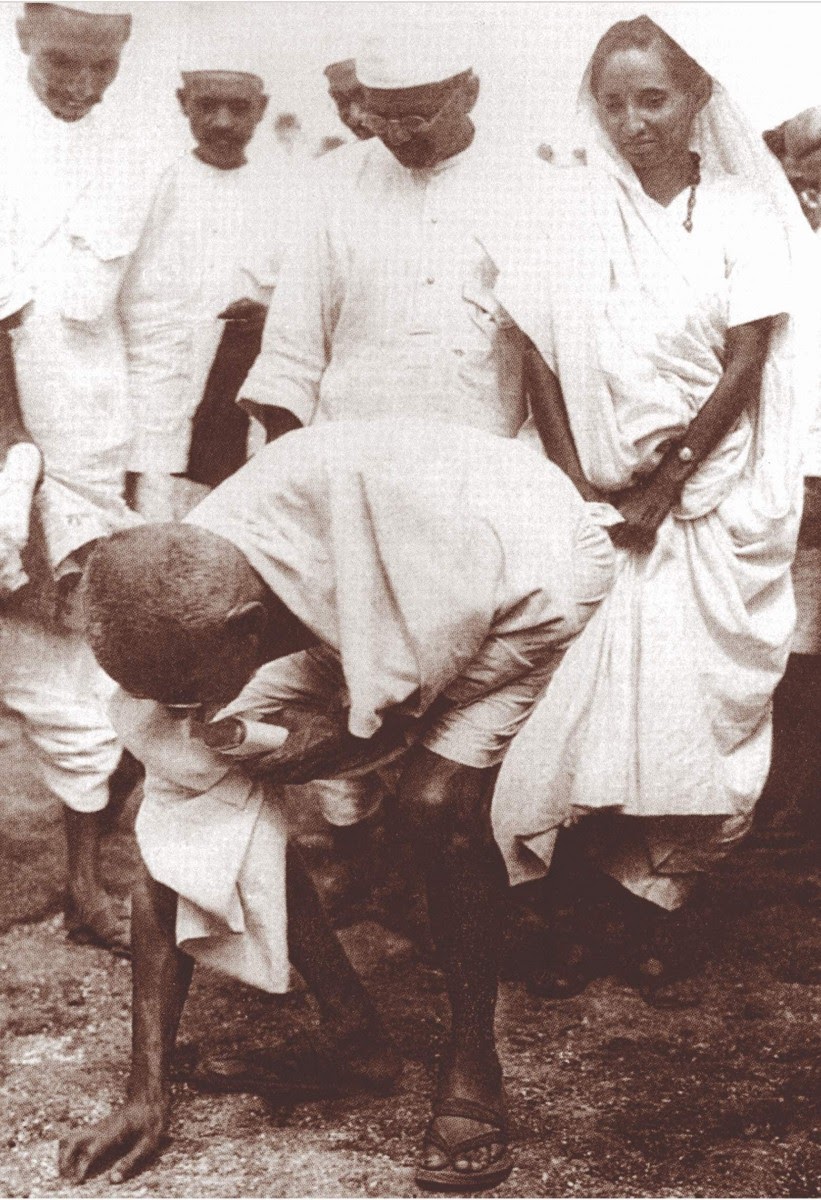
Gandhi collecting salt on the Gujarat coast. April 1930. Public domain.
3. Segregation Defiance: USA 1955-56
When an African American schoolgirl is ordered to give up her seat to a white woman, the abolitionists provide her with the strength to stay where she is.
History Had Me Glued to My Seat
At the age of 15, schoolgirl Claudette Colvin became the first African American to refuse to give up her seat to a white woman on a bus in Montgomery, Alabama.
Colvin stated she felt the hands of abolitionists Harriet Tubman and Sojourner Truth holding her down. She was dragged from the bus and subjected to sexist and racist behaviour before being arrested and held in an adult jail.
Following the arrest of Rosa Parks nine months later for the same action, the Women’s Political Council (WPC), a group of black women working for civil rights, circulated 50,000 flyers calling for a boycott of the Montgomery bus system. As news spread of the boycott, African American leaders across Montgomery began to lend their support.
From December 5, 1955 to December 20, 1956, approximately 40,000 African Americans refused to travel on Montgomery buses. Although many chose to walk, carpools were organised, with the city’s African American taxi drivers charging the same price as the bus fare for African American riders.
The protestors were determined to continue until the city met with their demands, which included the hiring of black bus drivers and a first-come first-seated policy. Ultimately a group of five Montgomery women sued the city in the U.S. District Court, seeking to have the segregation laws totally invalidated.
In December 1956, the US Supreme Court declared segregation laws in Alabama to be anti-constitutional (although this did not apply to interstate buses). The legal case, which ended the boycott, was partially built on the testimony of Claudette Colvin.
Numerous other mass actions were to follow, including the Freedom Riders of 1961, and The Birmingham Children’s Crusade, 1963, which led to hundreds of protestors being violently attacked, arrested and jailed.
It was not until 1964, with Jim Crow laws overturned by the Civil Rights Act, that segregation was banned.
4. Wave Hill Walk Off: Australia 1966 - 1975
Two hundred people turn their back on abuse and move to settle on traditional land. They refuse to leave, demanding the rightful return of the land to the indigenous people.
Without the land we are nothing
Gurindji tribal elder Vincent Lingiari led two hundred pastoral workers away from the privately owned Wave Hill cattle station in the Northern Territory, as a protest against low pay, poverty and decades of abuse. The ‘Walk Off Mob’ formed a new settlement at Daguragu, refusing an order to vacate. The strike lasted seven years.
Lingiari’s continued lobbying of politicians galvanised the strike and gained support from non-indigenous Australians. It was the precursor to lands rights legislation almost ten years later when, in 1975, 3300 square kilometers of Australian land was the first returned to the Gurindji tribe.
In 1976, The Aboriginal Land Rights (Northern Territory) Act was signed, allowing indigenous people to claim traditional and spiritual land.
A workers’ rights action resulting in a land rights victory.
5. The Sip-in: USA 1966
Four men walk into a bar and ask to be served. Sevice is denied because they are gay — the men risk arrest to ensure their story is reported and shared.
We are homosexuals
In 1966 New York City, serving alcohol to homosexuals was illegal. Under a disorderly conduct statute, city ‘cleanups’ encouraged the closure of bars frequented by gays and the arrest of homosexual customers by way of police entrapment. Many lives were destroyed as a result.
Dick Leitsch, a pivotal figure in the fight for gay rights, accompanied by three friends from the Mattachine Society—John Timmins, Randy Wicker and CraigRodwell—entered Julius’ bar in Greenwich Village, declared themselves homosexuals and asked to be served. This is thought to be the first organised act of civil disobedience by gay people.
Service was denied and the incident was widely reported in the press. Within a year, New York State courts ended the practice of using gay patronage as an excuse for revoking liquor licences; thus opening the way for licenced gay bars.
Leitsch’s further actions were instrumental in putting an end to entrapment while encouraging legal challenges to charges based solely on police testimony.

Dick Leitsch, 1966. Photographer unknown.
Influenced by the sit-ins at segregated lunch counters by black civil rights protestors, this was a brilliant example of how the non-violent, courteous action of four brave individuals led to societal change and the reframing of public understanding.
6. Navy-Culebra Protests: Puerto Rico 1970
As a world superpower destroys a tiny island with bombs and bullets, undeterred inhabitants refuse to surrender the fight to reclaim their home.
Culebra should be for Culebra
In 1970, Culebra islanders undertook a series of protests against the United States Navy for its use of the island for military training exercises.
The Navy expropriated 2000 of the island’s 7000 acres for bombing practice. Homes were torn down, and targets erected. A three mile exclusion zone was set around the island, making prisoners of the island's 700 inhabitants. Little fishing remained and any cattle were grazed on navy owned land.
LIFE magazine reported ‘the crunch of 500-pound bombs...the whine of jets, echoing machine gun fire, screaming rockets and the triple-throated boom of naval shells.’ Protestors stated that the bombing missions, which often occurred seven days a week, placed Culebra in a ‘deplorable situation.’
Unwilling to withdraw claims to the whole island, protestors built a chapel in just three days on Flamingo Beach, a restricted, major target area, using only crude tools. US Marshals ordered them to leave but they refused and six people were arrested. Six days later, the navy demolished the chapel.
Protesters illegally occupied restricted areas, including Flamingo Beach, remaining there for several weeks. Those who needed new homes squatted on Navy land, which was also used in the creation of sports areas and graveyards.
President of the Puerto Rican Independence Party and protest leader, Rubén Berríos, along with thirteen others, was sentenced to three months in a Puerto Rico prison for civil disobedience and trespassing.
In 1974, all political parties in Puerto Rico called for the US Navy to cease operations and leave the island. Finally, in 1974, President Nixon ordered the Navy to leave the island, which they did in December 1975.
Another example of a few hundred brave people standing firm in the shadow of a world superpower.

Timber trail at Pureoa Forest Park, Waikato. Credit: Buffy May
7. The Tree Sitters of Pureora: New Zealand 1978
A group of friends and activists set up home in the branches of 1000 year old trees, while below them, bulldozers and chainsaws move to destroy the forest.
There is No Other Way
In the 1970s, grassroots environmental groups started focusing their actions on the logging industry in New Zealand. The country had lost two thirds of its native forest cover as a result of logging since the 19th century. New Zealand logging is an industry that still accounts for 1.1% of the world's total supply of industrial wood and 1.3% of the world's trade in forest products.
A petition of approximately 350,000 signatures was presented to Parliament, demanding an end to logging and legal recognition of native forests. Despite this, the 1000-year old forests of Pureora were to be logged of all merchantable timber.
In the first ever tree-sitting protest, activists Steven King, Shirley Guildford and others from the Native Forest Action Council led the action against the decimation of the Pureora forest.
Protestors took action quickly, obtaining camping permits for the forest. They climbed into the canopy of six totara trees and demanded Pureora be spared. Platforms and tree houses were constructed as protestors occupied the area and refused to leave. Some blocked access to the trees with their bodies. This definitive, fast response was vital in that they established themselves before the authorities could respond.
The result of the protest was that both the public and government were alerted to the destruction of natural habitats, the loss of biodiversity, and environmental fragility.
This was a small act of civil disobedience taken by a few people who knew that bulldozers and chainsaws do not give way to petitions and prolonged debate. It led to a government-imposed logging moratorium and, eventually, the end of native forest logging in the park, with the creation of Pureora Forest Park in 1978. The Treetop protest platform is still accessible today.
8. Resistance to Toxic Mining: Estonia 1987
Students and scientists rise up against the mighty Soviets in a fight to rid their country of exploitative and polluting large-scale mines.
Phosphorite - No Thanks!
In the 1960s, the Soviet Union began exploiting Estonia’s rich phosphorite deposits for the fertiliser industry. During this time the country’s groundwater was contaminated by large-scale fracking (oil shale mining) operations. Hydraulic fracturing fluid, used during gas extraction, is a cocktail of chemicals including biocides, and contaminated ‘flowback’ liquid contains radioactive material. Other toxic compounds are released into the air during fracking and these have been linked to birth defects, neurological problems and cancer.
In 1987, a local news programme enlightened the Estonian people to Soviet plans to construct a huge phosphorite mine in Virumaa. The Soviet Estonian leadership had in the past been severely criticised for concealing information and this news unleashed an extensive protest campaign known as The Phosphorite War.
At first, Soviet censors silenced the reporting of protestors, but the press gradually shook off the Communist Party’s censorship and supported the people’s resistance to the phosphorite mine. Scientists from the Estonian Academy of Sciences, led by Endel Lippmaa, warned of the contamination of up to 40 percent of Estonia’s water supply.
The protest culminated in spring 1987, when brave students from Tartu University organised two peaceful demonstrations. Placards and T-shirts bore the slogan ‘Phosphorite - No Thanks!’ Declarations and newspaper articles were distributed. Estonian musicians joined the protest, singing songs that became symbolic of the struggle.
In the autumn of 1987, the Estonian leadership reached an agreement with the mighty Soviet government to halt the construction of the mine. This was the first extensive protest in Soviet Estonia. It encouraged resistance against the Soviet Union and led to the restoration of Estonian independence in 1991.
The Phosphorite War was one of the most important milestones in Estonian environmental history. It brought the people of Estonia together with a renewed sense of identity and proved the power of collective action. Most significantly, it unlocked the fetters of fear.

‘Our little republic will not be excavated! Enough playing with us! The outrage is coming!’ Letter written by an Estonian protestor. Credit: Triin Tark.
9. Poll Tax Refusal: United Kingdom 1989 - 1990
In a steadfast wave of organised resistance, the United Kingdom comes together to fight a discriminatory system enforced by a common enemy—the British Government.
Can’t Pay! Won’t Pay!
The Poll Tax (Community Charge) was introduced in Scotland in 1989, one year before England and Wales. It amounted to a single flat-rate tax on every adult, irrespective of personal income.
This resulted in lower income households being compelled to pay more in tax than higher earners. It was widely quoted that the billionaire Duke of Westminster would pay the same tax as his chauffeur.
From the day it was implemented, 1st April 1989, the people of Scotland were fiercely opposed to the poll tax, and they fought long and hard to have it abolished.
On the 31st March 1990 in Glasgow, 50,000 people marched peacefully through the city centre as part of the city’s poll tax protests. A campaign of organised resistance made it impossible for the councils to enforce the tax, and physically impossible for police to arrest mass defaulters. The blockading of housing estates and private homes from court-appointed sheriffs was a key part of the Scottish struggle.
The English and Welsh drew inspiration from Scotland's fight but the outcome was not as peaceful. A London march resulted in the worst riots in the city for over a century with 340 people arrested and 113 injured.
Prime Minister Margaret Thatcher was widely criticised for the political and fiscal disaster, and eventually resigned. Her successor, John Major, replaced the Community Charge with a system of council tax, a local taxation system based on property value.
By the end of 1990, an estimated 4 million people had refused to pay their poll tax and many of them spent time in jail. This was a passionate grass roots protest, which brought together people from all parts of society. As with protestors before them, some saw the only choice being resistance, even if that meant assault, arrest and time spent in jail.
It was the refusal to pay the tax that paralysed the system from the inside out. The machine was brought to a halt.
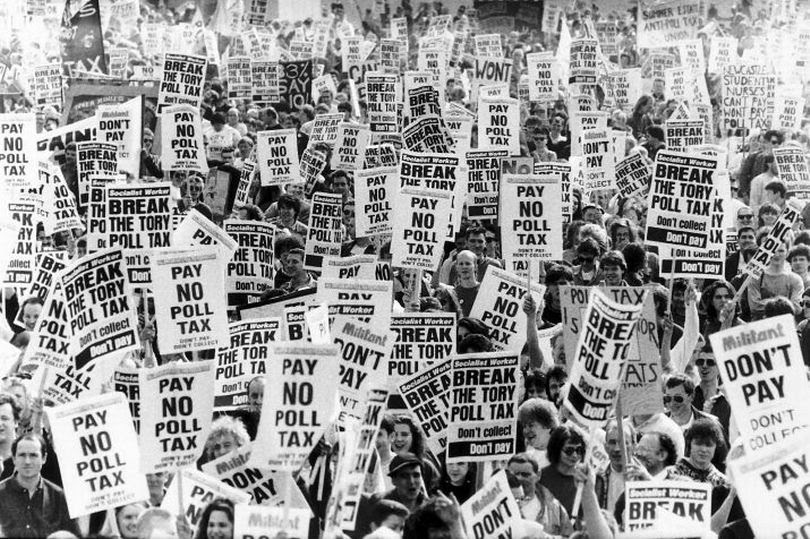
Poll tax protest. Photographer unknown.
10. Unethical patent laws: 1998 - Present day
Huge corporations seize seeds in a bid to control what we eat. Brave farmers all over the world risk ruination by refusing to accept this. Little victories can be inspirational.
Saving Seeds is a Political Act
As a result of a global legal offensive, farmers who have grown and shared seeds for thousands of years are fast becoming criminalised for their actions.
The world’s ten largest seed corporations dominate three quarters of the commercial seed market. Environmental and Agricultural activist Vandana Shiva urges the refusal to recognise unethical laws that rob people of the right to save and exchange seeds. She does this on the basis that those who control the world’s food control the world.
In this environment, farmers lose their autonomy. They must purchase seeds determined by seed corporations. Terminator seeds, for example, are genetically modified to become sterile after the first germination. They are expensive and require herbicides and artificial fertilisers all provided, at huge cost, by the corporations. The following year the farmer must purchase more seeds and more fertiliser. Those that are not ruined by inescapable debt become part of a corporate production chain.
Agricultural biodiversity is vital given the global challenges the world now faces; new strains of disease, environmental stresses in the face of climate change, and socio-economic challenges. The ability of crops to adapt is the cornerstone of the planet’s survival, yet over the course of the 20th century, according to the FAO, approximately 75% of crop diversity has been lost as a result of privatisation and monoculture—the growing of a single crop on the same land year after year.
Resistance against seed privatisation is global. Farmers are developing local seed systems, risking fines and imprisonment for storing and sharing seeds. They are marching, striking, refusing to roll over. They are paying fines and going to jail, and sometimes they win. The victories may seem small but they are monumental for those involved.
These farmers might not change the world immediately, but they continue to change their societies, which can and does lead to global change.
11. Peasants revolt: France 1999
A French sheep farmer finds a symbolic way to protest against the influx of multinationals by taking apart a McDonald’s, one brick at a time.
Fighting McDomination
In 1999, José Bové, along with 300 collaborators, dismantled a half-built McDonald’s in Millau (Aveyron). This was a symbolic action to protest against globalisation and the loss of food sovereignty to multinationals—that is the right to healthy, diverse and culturally appropriate food produced through sustainable methods. It was an action taken, not only on behalf of traditional French producers, but for those from all over the world.
Bové’s action created an army of agricultural activists and was part of a wider protest aimed at disrupting the influx into Europe of genetically modified crops and monoculture.
On the day of his trial in Millau, Bové arrived in an oxcart, a large wheel of Roquefort cheese held aloft. Later, dressed as a criminal to start his three month sentence, Bové was applauded by hundreds of supporters as he made the six hour journey to prison at the head of a convoy of tractors.
Bové used non-violent civil disobedience to call attention to injustices, and by spending time in jail won the support of thousands. He tapped into deep fears about the safety of the food supply in France, identifying and challenging what many considered a threat to French cultural identity.
This sheep farmer activist inspired an international protest movement that included Confederation Paysanne, the Associations for the Maintenance of Peasant Agriculture and La Via Campesina, the international peasants movement. These organisations continue to demand protection for human rights, including the right to control the supply and safety of one's food.
Bové was at the forefront of the successful movement against GMOs being grown in France and Europe. (Spain and Portugal are the only European countries who grow GMO crops). He served as a Member of the European Parliament with the European Greens from 2009 - 2019.
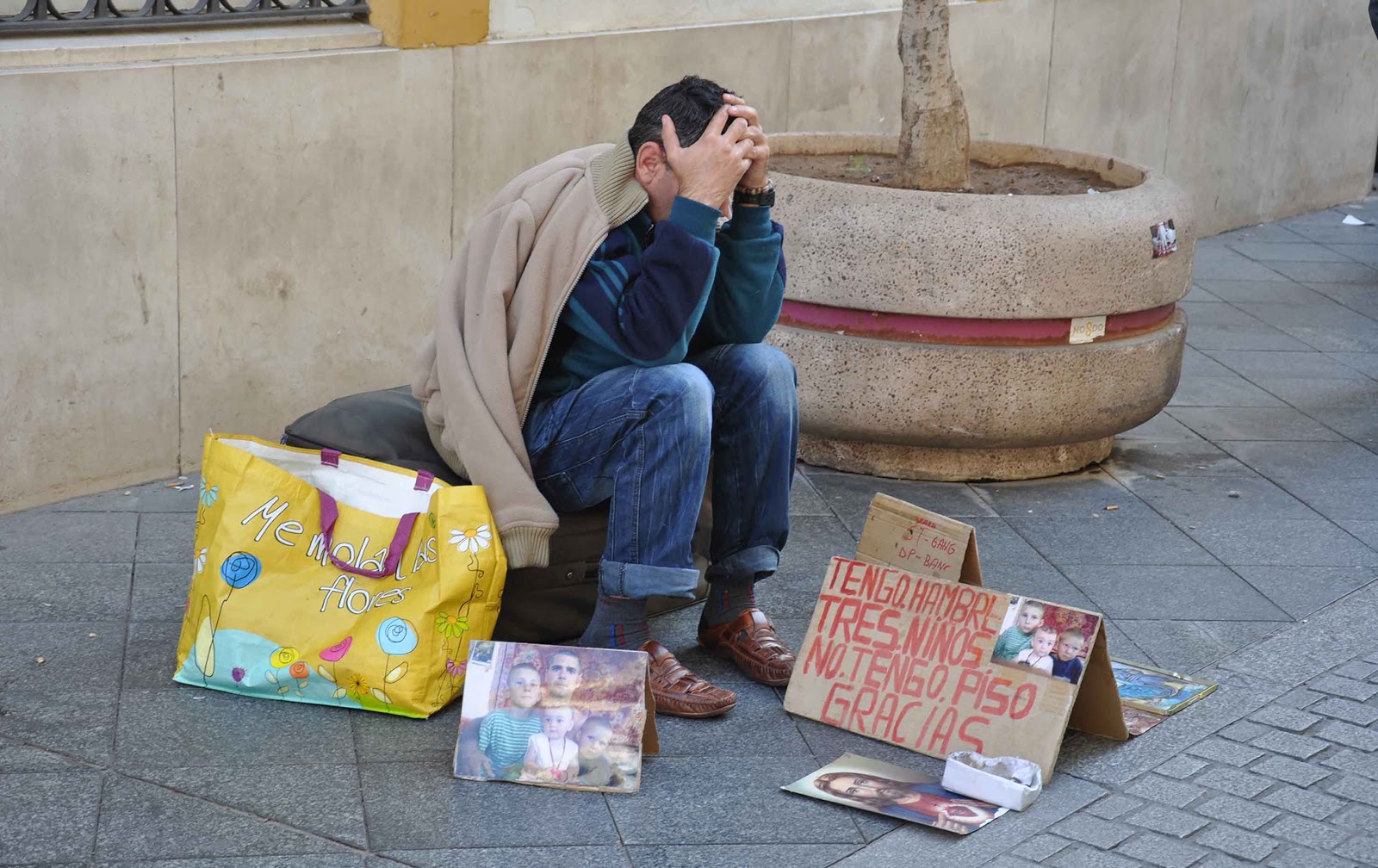
Seville 2012. Photo: author.
12. Eviction Resistance: Spain 2008 - Present day
People take back the power to fight evictions as the government and banks do nothing to help an increasingly desolate population.
The government bails out banks: PAH bails out people
Around 250,000 seizure orders were served on Spanish properties between 2008 and 2012. In 2013, there were an average of 184 evictions per day.
Anti-eviction organisations, such as the Platform of People Affected by Mortgages (PAH), were formed in reaction to the Spanish Government's failure to uphold the constitutional right for all Spaniards to enjoy stable and affordable housing.
The PAH aimed to prevent the systematic eviction of tens of thousands of debtors across Spain and to turn mortgaged homes into affordable rental properties while reforming the Mortgage Act, which previously granted banks the right to claim full payment of debt, even after evicting a property's residents.
The strength of this movement was based on its very broad social foundation. Weekly meetings empowered the people by sharing knowledge and experience of the eviction process.
The PAH could call on dozens of protestors to gather at short notice, blocking entrances to properties where eviction orders were being delivered. The PAH re-occupied empty housing owned by banks to provide shelter for evicted families. Eight months after the start of the collective occupation, 20 housing blocks were occupied, sheltering 1049 people.
These methods of political activism gained widespread legitimacy. Spanish banks had been bailed out with public funds. The PAH, and their followers, saw this not as illegal occupation but legitimate recuperation.
Along with highly organised demonstrations, manifestos and interaction with the media and public institutions, the PAH took part in controversial ‘escraches’-- protests staged outside the homes of politicians and the European Court of Justice, demanding changes to Spanish mortgage legislation.
The anti-eviction campaign challenged the rhetoric of the state, the banks, and property developers. The protests struck at the very core of Spain’s power structure in challenging forms of expropriation by state-backed private finance.
In 2013, The European Court of Justice declared support for the People’s Legislative Initiative – drafted by the PAH movement. This obliged the Spanish government to modify the Mortgage Law and Civil Procedure to adjust the
imbalance between creditor and individual debtor.
13. Digital civil disobedience: USA 2013
One man loses his freedom to expose what our governments are up to—watching and listening, collecting our data to manipulate and control us.
Whistleblowing is democracy’s safeguard of last resort
Edward Snowden, cybersecurity expert, copied and handed over a vast cache of close to ten thousand highly classified documents taken from the National Security Agency (NSA) when employed as a contractor with Booz Allen Hamilton.
When his concerns of unethical practice were dismissed, Snowden blew the whistle on secret details of surveillance programs conducted by the United States government (with the cooperation of telecommunication companies and European Governments).
His objective was to alert the world to widespread, unconstitutional surveillance and invasions of privacy, suggesting that if the governments will not represent the public interests, it is up to the public to champion them.
The Snowden leaks inspired five years of technological change within Silicon Valley tech giants, keen to regain their users' trust. Apple was the first to adjust its privacy policy and encryption and security practices.
The Snowden leaks didn't put an end to government surveillance. The fight against violation of privacy and the harvesting of data continue, but Snowden’s actions sparked a cultural shift, raising awareness of government infraction. They prompted a cultural discussion about government infringement of civil liberties. Having received death threats and branded a traitor by many, Snowden still lives in exile in Moscow.
Edward Snowden was one person taking action to expose, with great bravery and potential danger to himself, an injustice that affected us all.
14. The People’s Revolution: Sudan 2019
After decades of living under a brutal dictatorship, the Sudanese people rise up in a campaign of disobedience and resistance. It is a hard fight.
We Will Rebuild Sudan
On 11th April 2019, a pro-democratic, non-violent civil uprising involving thousands of Sudanese people overthrew the most brutal of dictators, Omar al-Bashir. His 30 year rule, supported by Saudi Arabia and the United Arab Emirates, decimated the economy, split society and placed barbaric controls on women.
Starting in the provinces in reaction to rising living costs, the uprising soon moved to the capital, Khartoum. North and south came together, regardless of class, ethnicity or religious belief in defiance of the regime. The country’s young professionals were at the forefront of the insurrection, with women encouraging other women to join them in their demand for freedom.
Restaurants, banks and businesses were closed down. The streets became desolate. There were eight months of strikes and demonstrations calling for democracy, the dissolution of the National Congress Party (NCP), human rights, economic reforms and the repeal of the public order law, designed to exclude and intimidate women from actively participating in public life.
Once Bashir was ousted, the Transitional Military Council (TMC) took charge and it soon became clear that it was not willing to give up power. On 3rd June, following weeks of peaceful celebration, the Rapid Support Forces opened fire on protestors who were holding a prolonged sit-in outside the military headquarters in Khartoum. The internet was closed down to suppress sharing of information. Hundreds were killed and raped, in a bid to break the revolution by traumatising its supporters.
The people didn't give up. Two weeks after the massacre, the youth reorganised, calling for sustained civil disobedience and non-violent resistance, claiming they would not stop until authority was transferred to a liberal civilian administration.
On 17th July, the TMC and civilian protestors represented by the Forces of Freedom and Change, signed a power sharing agreement.
15. Gilet Jaunes: France 2018-2019
President Macron—France’s youngest head of state since Napoleon Bonaparte—is served some grassroots revolution by a discontent and angry population.
Je suis le peuple. I am the people
The Gilet Jaune (Yellow Vest) protest came about as a reaction to changes in labour laws, in particular a rise in fuel taxes, but grew to demand social and economic justice. Organised via social media, through colère (anger) groups, the people of France came together in solidarity, irrespective of political and social backgrounds.
Following the tax cuts for France’s millionaires in 2017, fiscal demands on struggling middle classes had increased, while rural populations faced high unemployment levels and further economic downturn. Cuts in public transport services across France left much of the population reliant on cars. Rural populations, including those who had been priced out of living in the big cities, struggled to survive.
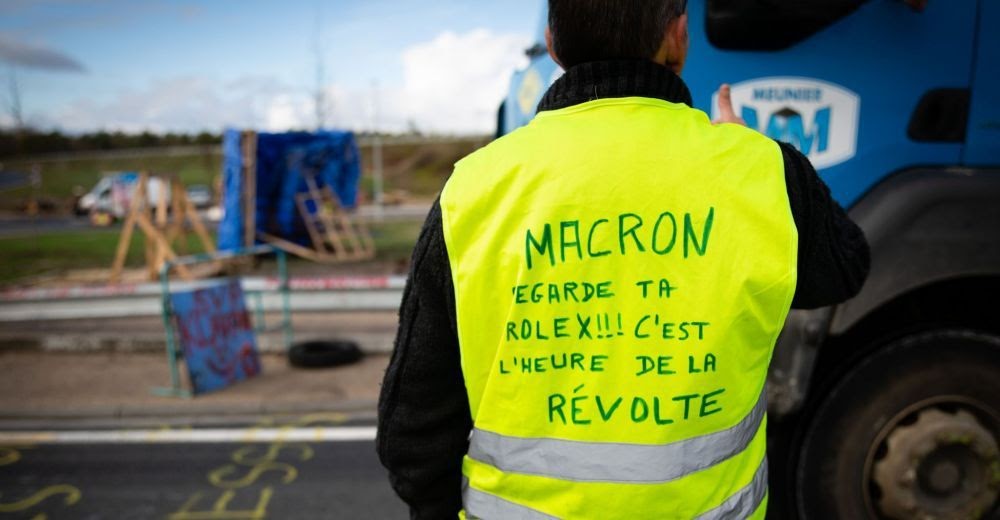
Gilet Jaune road block. Photographer unknown.
In October 2018, truck driver Eric Drouet called on the people of France to block their local roads on 17 November. The aim was to obstruct traffic in order to get the government’s attention. Approximately 290,000 people took part.
Every French motorist is obliged to carry a high-viz jacket—un gilet jaune—in their vehicle. These ubiquitous garments became the symbol of protest as drivers displayed them on dashboards, hung them from windows and emblazoned them with protest slogans. The power of the yellow vest lay in the support of the population. Within a month, polls showed over half the country agreed with the protest.
Although built on peaceful, civil disobedience such as road blocks and building temporary camps on roundabouts, the yellow vest protests led to some of the worst civil disorder France has seen. Even though the majority of protestors distanced themselves from the violent elements of the movement, the French authorities were accused of disproportionate use of force.
After four weeks of disruption, and in a significant U-turn, President Macron was forced to make concessions including the cancellation of the fuel tax, while launching The Great National Debate inviting citizens to express their concerns and hopes regarding French politics.
Civil disobedience does not equate to disregard for the law. What lies at its heart is the separation between the legal and the legitimate. It is used when traditional methods of protest, such as petitioning, lobbying, marching, voting and orderly, compliant demonstration have failed.
As for Extinction Rebellion, our strategy is one of civil disobedience grounded in non-violent disruption. There will be occasions when the state will choose to react with force, but to resort to the same tactics as those we seek to change is to abandon our moral compass.
Extinction Rebellion will continue to protest in the fight to halt mass extinction and minimise the risk of social collapse. Rebels refuse to sit idly by and watch grave injustices unfold. The struggle is one of survival.
We are building an inclusive, participatory movement for change—one grown from grassroots campaigning on the streets and in homes, schools and workplaces, throughout the web and across the planet, with over 1146 groups in 72 countries.
One has not only a legal, but a moral responsibility to obey just laws. Conversely, one has a moral responsibility to disobey unjust laws.
- Martin Luther King: A letter from Birmingham Jail.